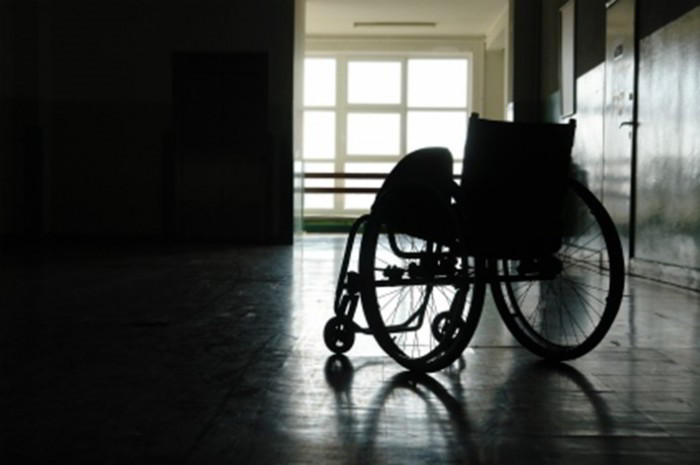Lack of skill to perform significant day-to-day jobs that others can perform, including work or fundamental actions. Based on the CENTERS FOR DISEASE CONTROL AND PREVENTION (CDC) in their report on “Disability and Secondary Conditions” in Healthy People 2010, there are 34.1 million adults in the United States age 65 and older who have impairments, and they represent about 63 percent of all handicapped individuals in the United States.
Gender Differences
Generally speaking, girls are more likely to be disabled than men are, in part because women live longer than men. Another reason for the increased chance of incapacity among girls is that they’re more prone to developing chronic disabling disorders like ARTHRITIS, THYROID DISORDER, and other clinical issues than guys are.
National data on the percentage of girls who have two or more long-term medical issues have shown that 61 percent of girls ages 70-79 meet this type, compared to 35 percent of guys in an identical age group. Seventy percent of girls age 80 and older have two or more chronic medical issues, compared to 53 percent of men.
Tasks Of Daily Living And Instrumental Activities Of Daily Living
A handicap may cause individuals to be unable to perform ACTIVITIES OF DAILY LIVING, including eating themselves, bathing themselves, or managing toileting by themselves. Handicapped people often also have problems with instrumental activities of daily living, (IADL) as well. These are tasks which aren’t needed for day-to-day living but are significant to most folks. IADLs include such jobs as having the capability to use the phone, drive an automobile, store alone, prepare meals, manage cash, and walk half a mile unassisted.
Higher Rate Of Institutionalization
Due to their physical limits, handicapped elderly individuals are more likely to reside in a NURSING HOME or an ASSISTED-LIVING FACILITY. Some studies have found that a majority of elderly individuals with five or more ADL disabilities (about 60 percent of them) have entered nursing homes. Yet, this also means that large numbers of elderly disabled individuals don’t reside in institutions. Instead, many elderly disabled people receive support from FAMILY HEALTH PROFESSIONALS or from HOUSE HEALTHCARE.
Systems for Handicapped Individuals
Most elderly individuals in America who are handicapped are eligible for Social Security benefits under the OLD AGE, SURVIVORS, AND DISABILITY INSURANCE SYSTEM that’s managed by the SOCIAL SECURITY ADMINISTRATION. Some are also eligible for SSI, a system for disabled people of all ages with low income. Folks on SSI are eligible for MEDICAID, an application that provides medical services and drugs.
Although individuals receiving Social Security retirement benefits are generally eligible for MEDICARE, which is a government-funded health insurance system, Medicare covers only about 80 percent of medical costs, and it will not pay for any drugs as of this writing.
Conversely, the Medicaid system, which is managed by the states, generally has no or very low co-payments for receivers and this plan does contain drug coverage for most medications.
Home And Handicapped Individuals
Home is, in addition, influenced by somebody’s impairment. In America, the Fair Housing Act makes it prohibited for anyone to discriminate against a disabled person who wants to lease or purchase a house or other home. Moreover, the Fair Housing Act requires owners to make reasonable accommodations. By way of example, a landlord with a “no pets” policy could be required to let a blind person to have a guide dog residing with them.
Complaints of Fair Housing infractions should be filed with the U.S. Department of Housing and Urban Development.
To contact this office, call toll-free: (800) 669-9777 (voice) or (800) 927-9275 (TTY). Write to this office at: Office of Program Compliance and Disability Rights Office of Fair Housing and Equal Opportunity U.S. Department of Housing and Urban
Development 451 Seventh Street, SW Room 5242 Washington, DC 20140
Work and Handicap
Disabled people certainly have a lower employment rate. Based on information supplied by the U.S. Census Bureau, 24.7 percent of all Americans ages 65-74 were used in 2000. The speed for handicapped people of the same ages was 10.8 percent.
A man with a disability may not be able work completely, although some disabled people may have the ability to work if accommodations are made to the impairment. An easy example of a sort of a public accommodation is a wheelchair ramp that enables a person using a wheelchair to enter a building that once had stairway just. Companies may also make accommodations for individual workers too, and there is a variety of accommodations that can be made under the AMERICANS WITH DISABILITIES
ACT (ADA).
Based on the U.S. Department of Justice in their 2001 pamphlet, “A Guide to Disability Rights Laws,” the ADA requires employers of 15 or more folks to “make reasonable accommodation to the known physical or mental limitations of otherwise qualified individuals with disabilities, unless it results in undue hardship.

